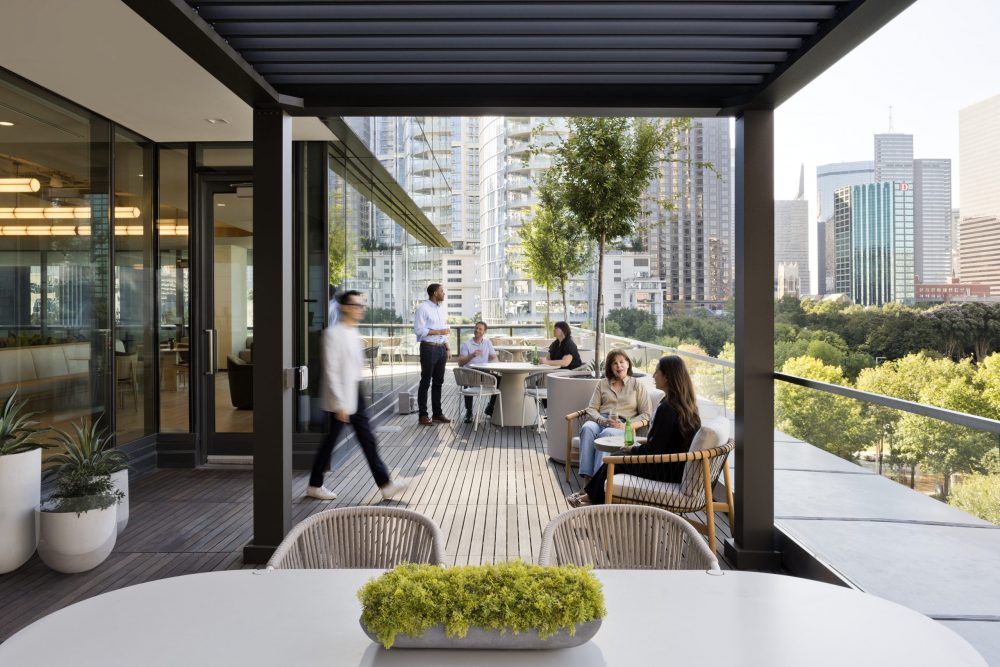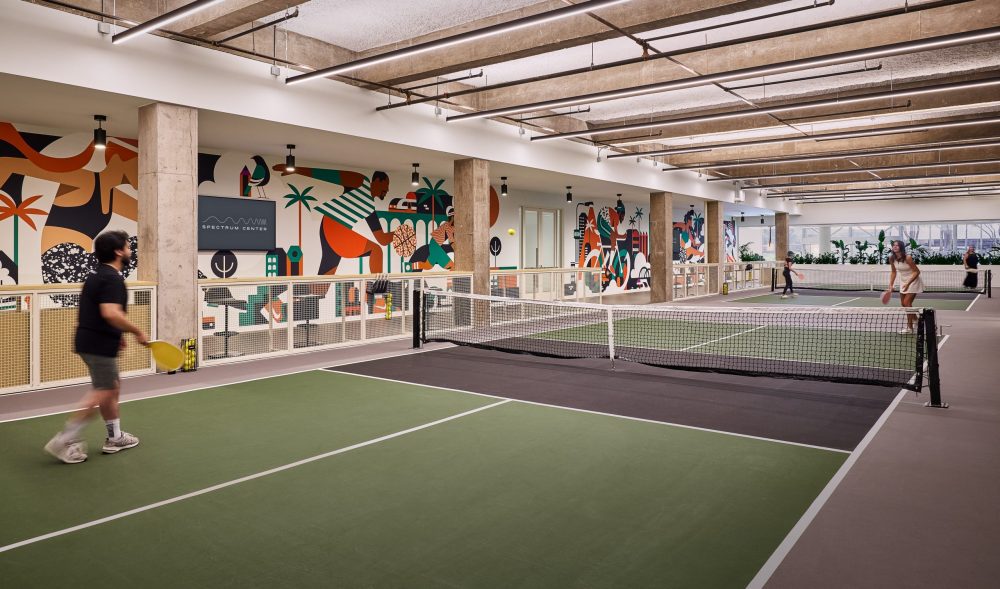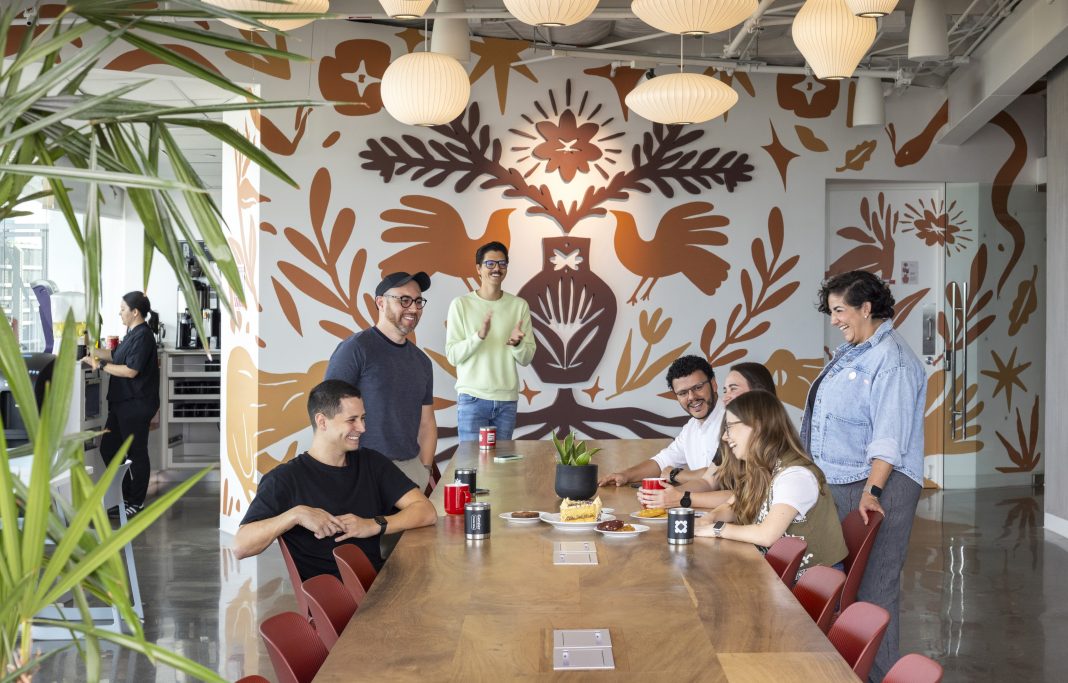As the nature of work continues to evolve, the environment and experiences that support it must adapt in tandem.
The office is more than a site that provides a desk and a computer for its employees, it is a space to connect, engage, create, focus and support the mission of the business, as well as a backdrop for employee and business growth.
The future of office design is no longer about maximizing headcount or assigning desks; it’s about enabling co-creation, fostering connection and delivering experiences that adapt to changing needs, inspire talent and connect employees to the purpose of the organization.

From Static to Adaptive
Prior corporate office layouts were designed to support task-oriented, individual work, with planning often emphasizing private offices and isolated workstations. Work is different now – and it is time for the workplace to respond.
People need the office to drive their productivity, and it’s time for the workplace to meet the moment.
The workplace should not be approached as a monolithic solution. Today’s work environments must support dynamic workstyles, variable occupancy and hybrid interactions and engagements. This shift in how people, individuals and teams work demands:
- Adaptable furniture that can be easily reconfigured to support varying team sizes, work styles, and activities.
- Planning with demountable partitions that enable spaces to flex between private focus and open collaboration.
- Access to mobile collaboration hubs that bring together people, tools, and resources- wherever and whenever they’re needed.
These dynamic solutions empower organizations to respond quickly to the changing needs of the business, while giving employees and teams more choice and control over how they work.
In partnership with CoreNet Global, Gensler surveyed corporate real estate executives to learn their progress, priorities and actions around the state of the adapting workplace. Updates, modifications, and relocations are shifting to prioritize experience and uncompromising quality. Relocations are seeking improved facilities with amenity rich offerings and walkable neighborhoods with active, engaging communities.
Where modifications occur, footprints are adapting, and shared space is a priority. Collaboration spaces are in greater demand with quantity of team spaces, meeting spaces and social spaces driving need for fewer individual workspaces. Investments in technologies to support combined virtual/in-person collaboration go hand in hand with these modifications.

From Expected to Experiential
The modern workplace is experiential. It’s not just about aesthetics, it’s about how people feel, interact, with a direct connection to performance. Employees are looking for more than the corporate experience; preferences are shifting from business-like settings to nature retreats, creative labs, and residential experiences.
The most recent Gensler 2025 Global Workplace Survey research shows that, globally, only 38% of employees strongly agree that their workplace provides a great experience
Today’s workforce wants an experience that is intentional, aligned, and purpose driven. Experience differentiators that can meet evolving expectations, include:
- Hospitality infused experiences thoughtfully designed to meet the needs of both staff and visitors.
- Amenities and incentives to create the office as a compelling destination.
- Immersive branded spaces that tell an authentic story that connect back to the organization.
- Kinetic environments that turn the workplace as a hub from community, growth and inclusion.
As these new experiences take shape, their success will depend on being self-explanatory, intuitive, and emotionally engaging— allowing users to navigate them effortlessly while fostering a sense of connection, clarity, and purpose.

From Capacity to Connection
Real estate metrics are shifting. Instead of measuring square footage and occupancy, leaders are asking does this space foster human connection. The workplace survey results also revealed the following:
- 65% of employees say the office is where they feel most connected to company culture.
- 68% say working in the office positively affects their connection to a shared mission or purpose.
- 82% report an intense sense of belonging and community with colleagues.
- Offices are now social ecosystems where friendships and mentorships begin.
These intangible factors are difficult to quantify, but they have a tangible impact on performance, retention, and brand loyalty. It’s time to rethink how and where work happens. Workplace design isn’t just about looks—it’s about creating environments that inspire and enable human potential.
Traditional settings, desks for focus space, enclosed spaces to minimize distraction and allow for confidentiality and concentration, should not be removed but rather combined with flexible spaces for collaboration, learning and socializing. Diverse settings to allow for choice should be balanced to support social, functional and restorative spaces.

Design for Outcomes
A workplace that doesn’t work isn’t a workplace. The workplace is a dynamic tool for productivity, culture, and well-being. The future of workplace strategy lies in bridging the gap between the current workplace experience and what employees value.
In addition to seeking evolved workplace experiences, employees continue to crave flexibility and autonomy. Achieving this balance requires a shift in mindset—one that redefines control and trust. Leaders must design workplace norms that prioritize outcomes over visibility, fostering a culture where performance is measured by impact rather than presence.
The workplace experience has a direct correlation to its effectiveness. The most effective spaces evolve in step with their people, empowering them to do their best work, wherever and whenever it happens. This isn’t just a matter of convenience; it’s a strategic investment in the long-term success of both the organization and its employees.


